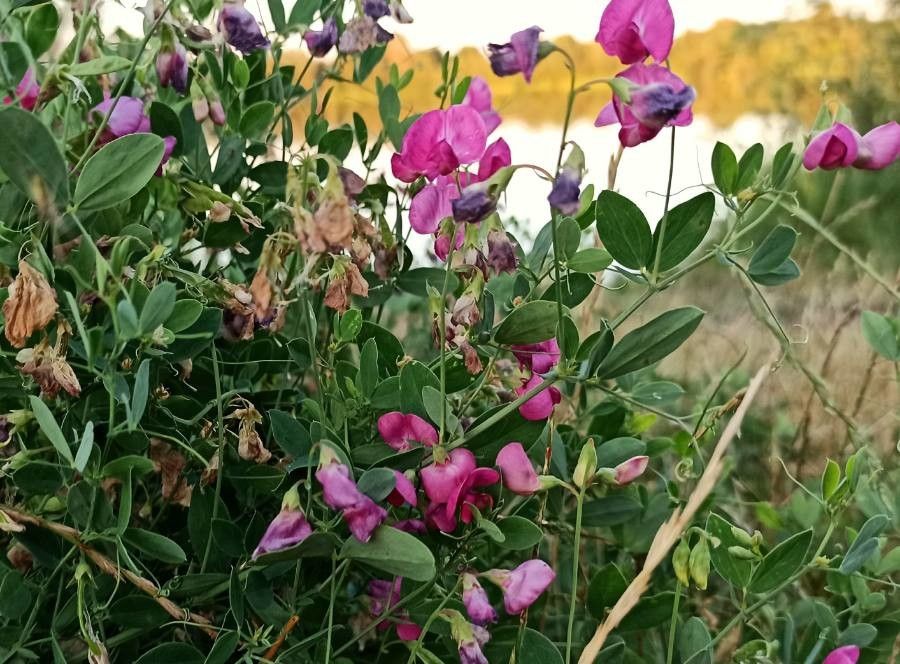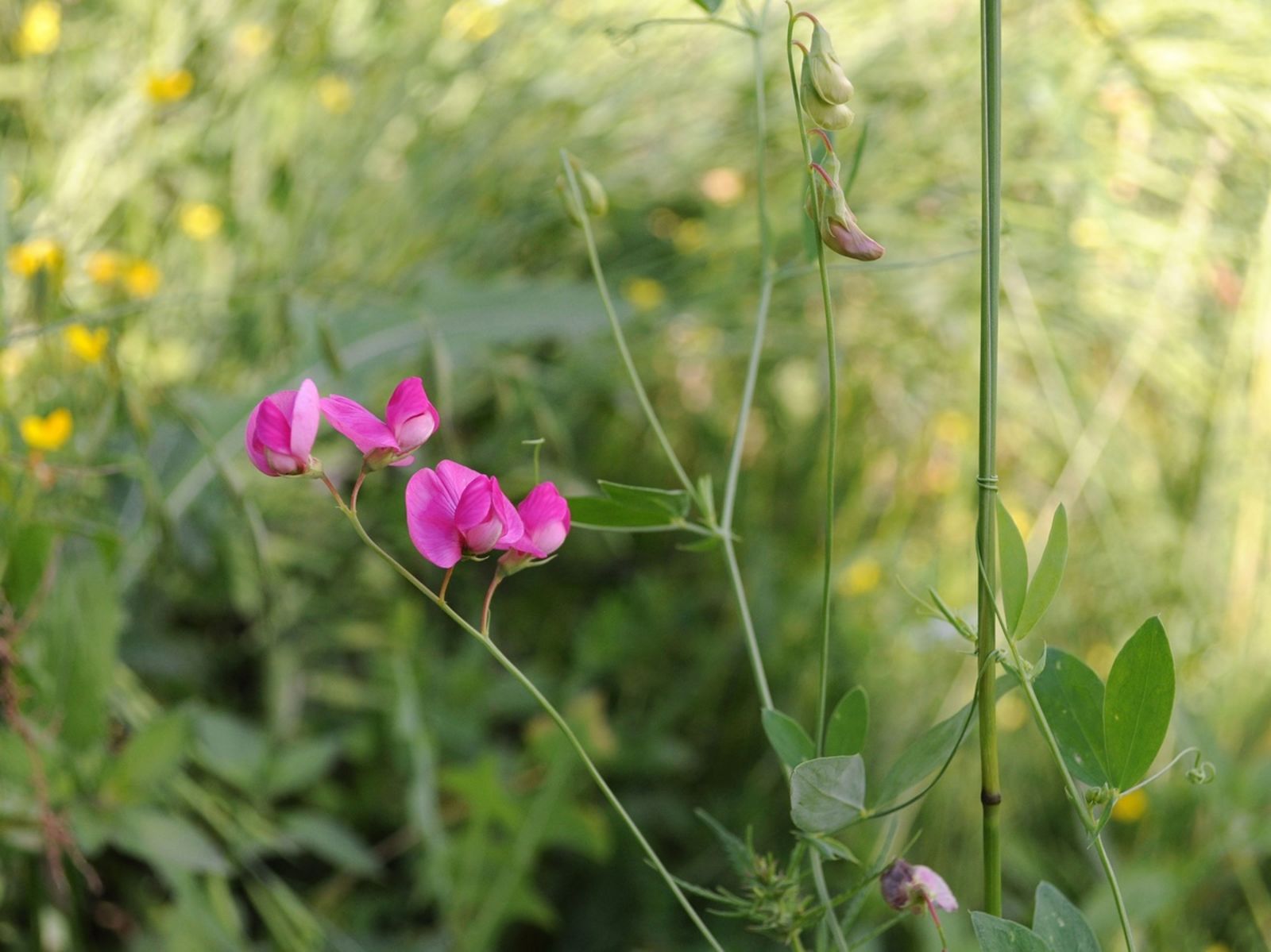earthnut pea, tuberous pea, aardpeer
lathyrus tuberosus
Also known as: ["earthnut pea","tuberous pea","aardpeer","groundnut pea"]
Overview
A perennial legume with edible tubers and fragrant, pea-like flowers, native to Europe and parts of Asia.
Benefits & Perks
["edible fruits","medicinal use","fragrant flowers","wildlife attractant (bees, butterflies, birds)"]
Botanical Classification
| Phylum: | Magnoliophyta |
| Class: | Magnoliopsida |
| Order: | Fabales |
| Family: | Fabaceae |
| Genus: | Lathyrus |
| Botanical Name: | Lathyrus tuberosus |
Plant Characteristics
Basic Information
- Category: Herbs & Weeds
- Suitable Location: garden bed or container in a sunny to partially shaded area
- Suitable For:
- Is Weed: No
- Allergenicity: low
Environmental Needs
- Climate: {"temperatureRange":"5–30°C"}
- Hardiness: {"zones":"4–9"}
- Misting: rarely required, only if ambient humidity is very low
- Drainage: Well-draining to fast-draining.
- Soil Type: Rich, loamy soil with good drainage; amended with compost or organic matter.
Maintenance Level
- Maintenance Level: moderate
- Toughness Level: moderate
- Pruning Frequency: As needed, typically after flowering or in late fall.
- Pruning Intensity: Light to moderate; avoid heavy pruning unless necessary.
Care Details
Ideal Sunlight Coverage:
Full sun (6–8 hours/day) in spring/summer; partial shade in intense summer heat.
Sunlight Tolerance Tips:
Gradually acclimate to full sun to prevent scorching; provide afternoon shade in hot climates; adjust indoor placement to mimic natural light cycles.
Care Requirements
Care Difficulty
moderatemoderate
Sunlight
full sun to partial shade
Morning sun is ideal; rotate plant for even growth; avoid direct midday sun in summer.
Watering
every 7–10 days during active growth, reduce in winter
Water at the base to avoid foliage disease; ensure soil dries between waterings; adjust for seasonal changes.
Soil
well-drained, loamy soil with moderate organic matter
pH: Slightly acidic to neutral (6.0–7.0).
Avoid heavy clay soils; ensure pots have drainage holes; topdress with compost annually.
Temperature
Prefers 60–75°F (15–24°C); tolerates cooler temperatures but avoids frost.
Protect from frost; avoid sudden temperature swings; monitor for heat stress signs.
Fertilizing
every 4–6 weeks during growing season
Fertilize sparingly to avoid tuber rot; stop feeding in late summer; use organic options like compost tea.
Propagation
Methods
Tubers or seed; tuber division is most reliable for home growers.
Step-by-Step Propagation Guide
- Select healthy tubers.
- Divide with clean cuts.
- Plant 2–3 inches deep.
- Water lightly.
Best Time: Spring, when new growth begins.
Environment
Warm (65–75°F), humid, and bright indirect light; protect from drafts.
Medium
Well-draining soil mix with perlite or sand; can also be started in water.
Hormone
Not typically required for tuber division; optional for seeds.
Timeline
Tubers may sprout within 2–4 weeks; seeds take 2–4 weeks to germinate and several months to establish.
Tools Needed
Sharp knife, gloves, small pots, well-draining soil.
Quick Tips
Ensure each division has an eye or bud; keep soil consistently moist but not waterlogged; provide bottom heat if needed.
Pruning & Repotting
Pruning Guide
Method
Snip dead or yellowing leaves at the base; trim spent flower stems to encourage tuber growth.
Pruning Plan
Minimal pruning needed; focus on removing dead or damaged foliage to encourage tuber development.
Tools
Clean scissors or pruning shears, gloves.
Checklist
Inspect for dead/damaged growth; sanitize tools; prune carefully; dispose of clippings.
Repotting Guide
Best Season
Early spring, before active growth begins.
Pot Size
One size up (e.g., from 4-inch to 6-inch pot); ensure adequate depth for tubers.
Method
Gently lift the plant; loosen roots; place in a slightly larger pot with fresh, well-draining soil; water lightly.
Suggestions
Repot every 2–3 years or when roots fill the container; necessary to refresh soil and provide space for tubers.
Checklist
Check root bound status; prepare new pot; handle tubers carefully; use fresh soil; water after repotting.
Advanced Care Tips
Watering Mastery
Watering Checklist
Check soil moisture; water deeply; ensure drainage; adjust for season.
How to Apply Water Properly
Water thoroughly until it drains from the bottom, ensuring even saturation of the root zone; avoid wetting leaves to prevent fungal issues.
Watering Schedule Tips
Water deeply once the top inch of soil is dry; reduce frequency in winter to prevent tuber rot.
Soil Improvement
Add perlite or sand for drainage; incorporate compost for fertility; ensure soil is loose and aerated.
Temperature Stress Management
Signs of Temperature Issues
Wilting, yellowing leaves (cold); leaf scorch, stunted growth (heat).
Cold Stress
Growth slows or halts; tubers may rot if soil remains wet in cold conditions.
Solution: Move to a warmer location; ensure soil is well-drained; mulch to insulate roots.
Hot Stress
Leaf scorch, reduced flowering, and tuber development may be hindered.
Solution: Provide shade during peak heat; increase watering; use mulch to retain soil moisture.
Fertilizing Guide
Fertilizing Checklist
Check season; dilute fertilizer; apply to soil; avoid foliage contact.
Fertilizing Method
Use balanced liquid fertilizer diluted to half strength every 4–6 weeks during growing season; avoid fertilizing in winter.
Common Problems & Solutions
Toxicity Warning
Cats
Non-toxicLathyrus tuberosus is not toxic to cats. The tubers are generally safe for feline consumption, though excessive intake may lead to mild digestive issues. No specific toxins are known to affect cats adversely.
⚠️ Symptoms:
🌿 Toxic Parts:
⚡ Toxic If:
if eaten
Dogs
Non-toxicThe tubers of Lathyrus tuberosus are not considered toxic to dogs. While ingestion in large amounts may cause mild gastrointestinal upset, there are no known toxic compounds that would pose a significant health risk to canines.
⚠️ Symptoms:
🌿 Toxic Parts:
⚡ Toxic If:
if eaten
Humans
Non-toxicLathyrus tuberosus, commonly known as the earthnut pea or tuberous pea, is generally considered non-toxic. However, consumption of large quantities of its tubers may lead to mild gastrointestinal discomfort due to the presence of certain compounds. The plant is not known to produce significant toxins that would cause severe poisoning.
⚠️ Symptoms:
🌿 Toxic Parts:
⚡ Toxic If:
if eaten in large quantities
Frequently Asked Questions
Q: Are the tubers of Lathyrus tuberosus edible?
A: Yes, the tubers are edible and have been used as a food source historically, but they should be cooked before consumption.
Q: Does Lathyrus tuberosus attract wildlife?
A: Yes, it attracts bees, butterflies, and birds due to its fragrant flowers and nectar.
Q: Is Lathyrus tuberosus toxic to pets?
A: It is mildly toxic to dogs and cats if ingested in large quantities, but generally considered safe in small amounts.
Quick Reference
| Family: | Fabaceae |
| Care: | moderate |
| Light: | full sun to partial shade |
| Water: | every 7–10 days during activ |
Get Expert Care Tips
Download the Plantious app for personalized care reminders and plant identification!
Google Play App Store








